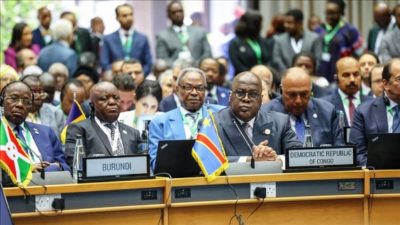Activists are expressing disappointment with President Barack Obama’s plans for the Aids treatment programme in Africa, charging that he has fallen short of the achievements of his predecessor, George W. Bush.
“President Obama has all but failed to fulfil his commitments to wage an aggressive battle against global Aids,” a coalition of Aids-focused groups declared last week, assigning him a grade of D+ for his performance to date. Gregg Gonsalves, a leading US anti-Aids campaigner, warned an audience in New York last week, “I am about to say something shocking: I miss George W Bush.”
In many respects, Gonsalves continued, Bush was a terrible president, but “he was exceptional in one. The President’s Emergency Programme for Aids Relief (Pepfar), despite its flaws, saved millions of lives around the world.” Obama, by contrast, is not providing the resources needed to sustain the rate of growth in the number of HIV-positive Africans who receive ant-viral treatments through Pepfar.
That trend prompted Dr Peter Mugyenyi, director of a Uganda Aids clinic, to express fear that “the carnage of Aids will once again surge and the obvious success we have seen of Pepfar may begin to be reversed.”
Since its inception in 2004, Pepfar has provided anti-viral treatments to nearly 2.5 million people with Aids. The programme targets 15 poor countries, 12 of them in black Africa. Kenya ranks as the single-biggest beneficiary of this aspect of Pepfar, with close to 300,000 Kenyans receiving anti-viral drugs as of September 30.
Nigeria has the world’s second-highest number of Pepfar treatment recipients: 286,000. Some 197,000 Tanzanians are getting anti-viral medications through the programme, as are 175,000 Ugandans. The programme also helps support care for 10 million Africans who have contracted Aids.
Aids activists such as Gonzales acknowledge that Pepfar has been enormously beneficial, and they also salute Obama’s decision to end a ban on entry to the United States by HIV-positive travellers.
Due in part to Pepfar, Aids-related death rates in Kenya have dropped by 29 per cent since 2002, while the overall Aids mortality rate for sub-Saharan Africa has fallen 18 per cent since 2004.
A $19 billion US funding commitment for Pepfar over the past five years enabled an average of 500,000 people with Aids to be added to the treatment roster each year. Under Obama’s recently announced five-year Pepfar strategy, the average annual rate of growth would slow to 320,000.
By 2014, according to this new plan, about 4 million people worldwide will be receiving anti-viral drugs through Pepfar. That’s roughly 1 million fewer than would have gained access to the life-extending treatments had the Bush-era growth rate been sustained.
Funding
Leaders of three dozen US medical and public health schools recently urged Obama to accelerate Pepfar and other initiatives until treatment becomes available to everyone who needs it.
The deans and presidents specifically asked Obama to fund global Aids programmes at the level projected in a Bill approved by Congress and signed by Bush.
That legislation calls for the United States to spend $48 billion over the next five years to fight tuberculosis and malaria as well as Aids.
Obama has not yet made a funding commitment for Pepfar in the coming year. As a candidate for president, he pledged to increase Pepfar spending by $1 billion a year, but in his first budget, Obama called for only $165 million in additional funds.
The treatment trend partly reflects a decision by the Obama administration to devote more funding to diseases other than Aids that kill large numbers of Africans, especially children. The United States intends to make diarrhoea prevention and treatment more widely available, for example.
Obama’s five-year Pepfar strategy meanwhile envisions a transfer of responsibility for the programme to local administrators in the countries where it is operating. The White House also plans to focus on preventing transmission of the virus to babies born to women who are HIV-positive.
East African


















